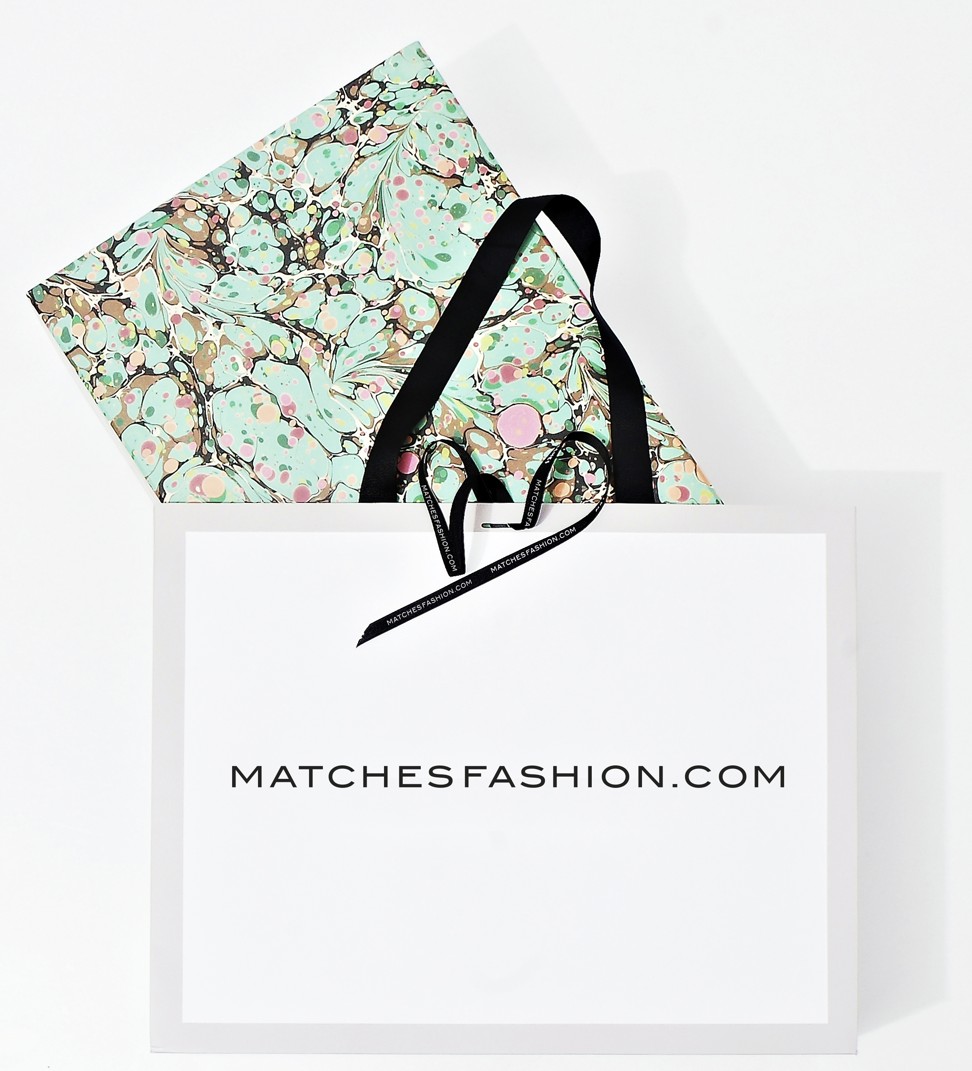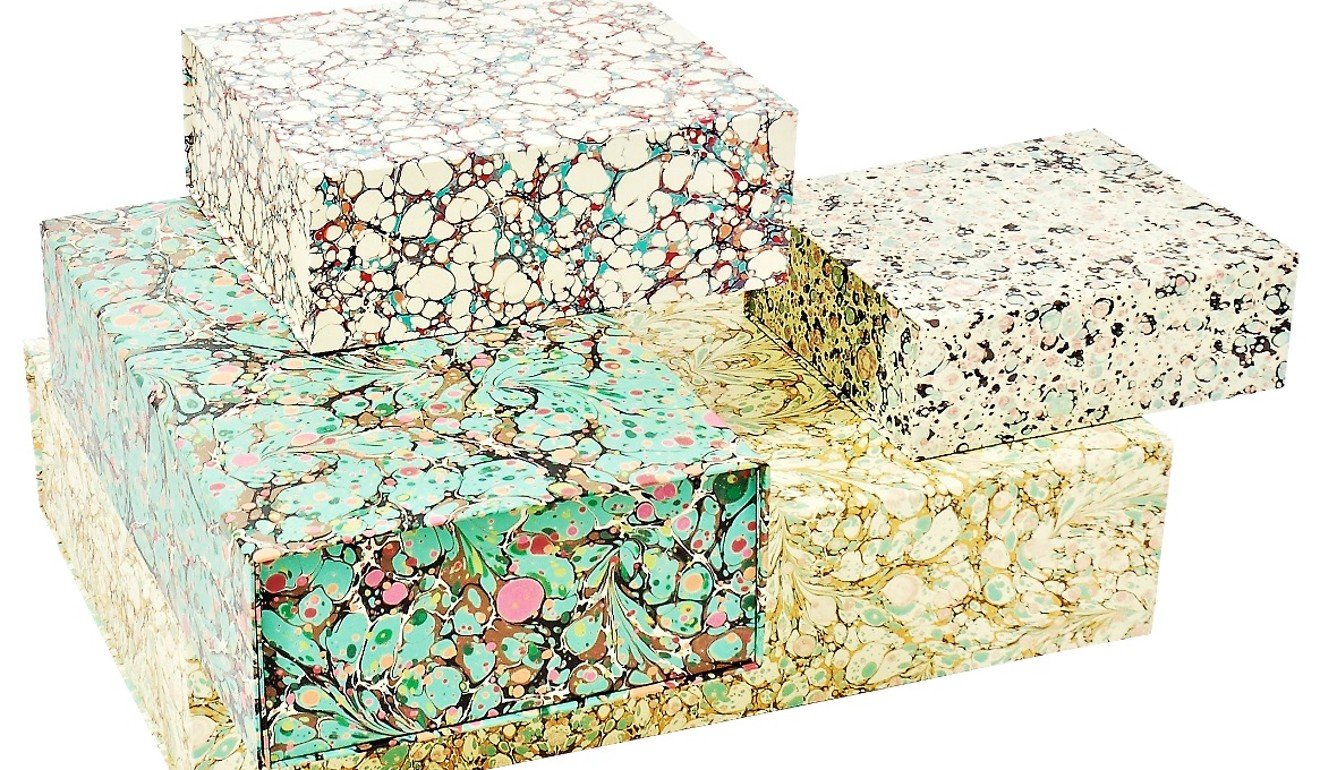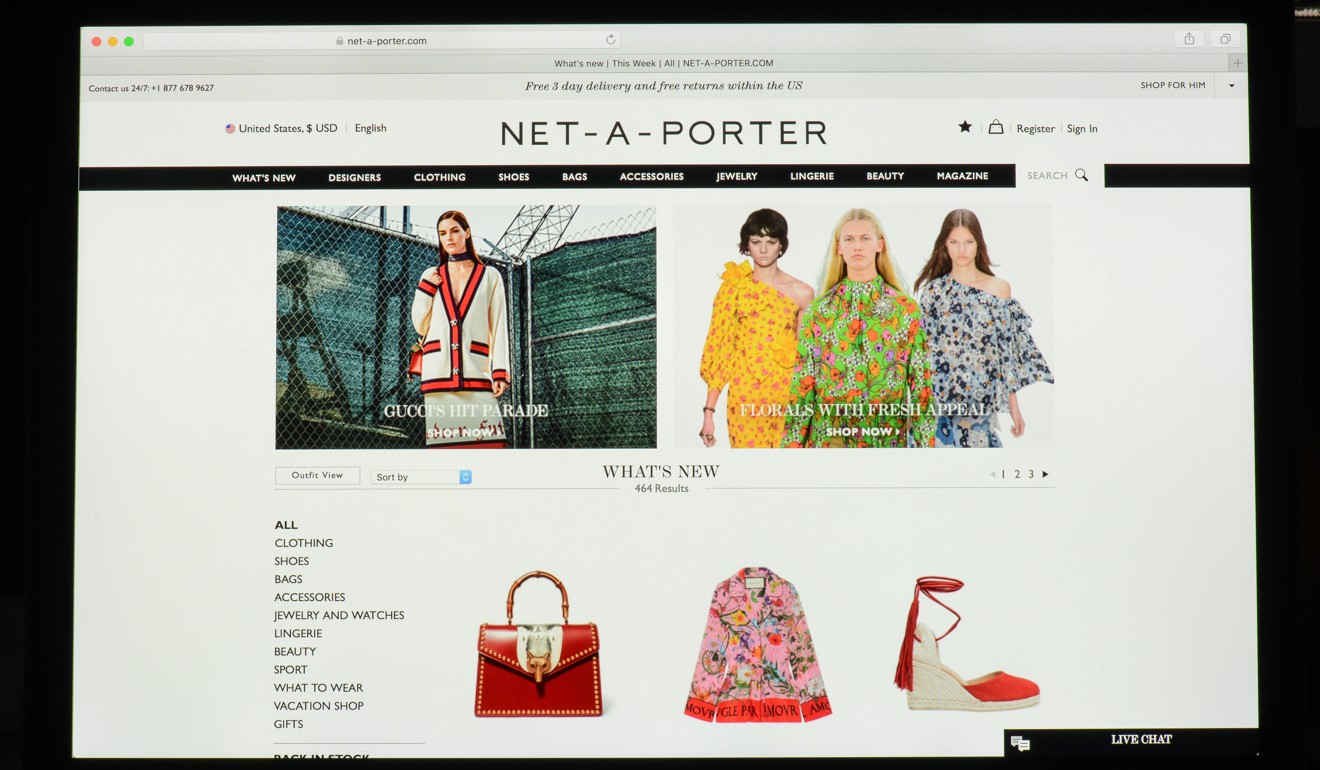
Christmas shopping online creates waste mountain of packaging from luxury retailers
- When you’ve built your strategy around offering a luxury experience right down to the packaging, adopting environment-friendly policies is fraught with risk
- Gift boxes, ribbons on every item, and tissue paper galore are among the frills customers have got used to; still, some retailers are changing
The Christmas season is upon us, and with it comes gifts, and the great debate about gift wrapping.
The habit of using posh decorative paper to add surprise and the festive factor to a gift has eco-warriors constantly up in arms, but what about that year-round habit of online shopping?
Online fashion stores invest in bricks and mortar ‘to bring brands to life’
Luxury retailers in particular look to offer a premium experience through their deliveries. This means they often use lavish gift boxes, with ribbons and stickers on every item, receipts and return forms encased in thick envelopes, and tissue paper galore.
The environmental impact is undeniable, and that is not even considering the carbon footprint left by their offers of free shipping and returns. All this encourages consumers to use their homes as fitting rooms and DHL couriers as sales assistants, ferrying wish list items to and from the warehouse instead of the boutique floor.
Married couple and confessed “shopaholics” Jeremy Tan and Michelle Lam admit they take advantage of the free shipping on offer to buy more, which increases not only the size of the packages delivered to them but the quantity.

“If it’s free shipping, I can break my order up [into multiple orders] so the payment and returns, if any, are much clearer,” Tan admits. Lam says: “If there’s no free returns/shipping, I might not make a purchase to try it on.”
One of the earliest online luxury retailers to offer complimentary deliveries was Net-a-Porter, which did so in Hong Kong when it launched a warehouse locally. When shopping on its site, users are prompted at the checkout to choose between same-day and next-day delivery. “Signature” packaging and “discreet” or “basic” packaging is available.
For deliveries that day, an in-house courier brings your items to your doorstep in a shopping bag, with or without a Net-a-Porter.com logo on it, while for next-day deliveries via DHL, signature packaging includes a Net-a-Porter-branded box.

Though the company declined an interview about its packaging strategy and recycling policies, its website notes that all its packaging is FSC-certified and fully recyclable. (FSC, or Forestry Stewardship Council, certification is awarded to companies which act in an environmentally, economically and socially responsible way.) However, frequent shoppers call out Net-a-Porter and its sister site Mr Porter as being among the worst for packaging waste.
Another online luxury retailer, Matchesfashion.com, offers two types of packaging, and its signature box has become central to the retailer’s branding – just as Liberty London is known for its floral and paisley patterns, Matchesfashion.com’s marble-printed boxes have become such icons that the print was used in a collaborative project with suitcase-maker Globetrotter.
It’s difficult to argue for decreased packaging when you’ve created a box designed for customers to covet – which is why the company has engaged the sustainability consultancy Eco-Age, a company that has worked with fashion label Stella McCartney, watch brand Chopard and jeweller Swarovski.
Five new fashion collections to check out in Hong Kong this month
“Our ultimate goal is to make our packaging as sustainable as possible,” says Matchesfashion.com chief brand officer Jess Christie.
“Working with Eco-Age we’re developing a long-term strategy that puts our iconic marble box at the heart of the campaign, and asks some critical questions about reuse and longevity of packaging. We are looking at how we ensure our packaging stays desirable while reducing the environmental impact.”
Pledges the company has made internally include making sure packaging is recyclable, introducing a half-sized version of its boxes and incorporating more sustainably sourced materials. It has also used marble print on the interior of its brown-box eco-packaging to keep everyone happy.

Shoppers such as Tan and Lam do still value the luxury of premium packaging, however. “I love the sound of the tissue paper unwrapping, and the feel of pulling the ribbons, it makes the package feel special and luxurious. I do expect some sort of packaging and when it’s done right, I’m so impressed,” Lam says.
However, she admits she finds some elements excessive, including “boxes within boxes, lots of tissue paper, stickers, and MyTheresa even has an A4 folder for your bill”.
Other shoppers, such as Jacqueline Chan, feel guilty receiving any type of packaging.

“Online shopping is one area that makes me conflicted when I try so hard to reduce waste in other parts of my daily life,” Chan says.
“A girl needs to shop! But I always go for eco-packaging and I also return any boxes, plastic bags they pack beauty items in, even the paper envelope that Net-a-Porter puts the invoice in – I secretly hope that they reuse them.
“I do online grocery shopping on Ztore.com and they offer options to reuse old boxes and packaging for delivery, and I wish luxury retailers would offer options like ‘minimum packaging’.”

A casual survey of luxury shoppers reveals that many are frustrated that eco-packaging options do not feel ecologically sound at all, and merely remove one layer of boxes without eliminating excess tissue paper or ribbons cut to order. Many in Hong Kong note that recyclable boxes are a moot point in a city with no convenient or authentic recycling options.

That said, some retailers also view the issue as a chance to let consumers know about their sustainability practices. As part of its holiday campaign, Hong Kong-based luxury lifestyle retailer Lane Crawford publicised its improved packaging quality, which includes 100 per cent biodegradable FSC-certified paper shopping bags, wrapping paper and boxes printed with water-based ink.
Meanwhile, Vestiaire Collective has made sustainable style a priority by promoting the resale of luxury goods.
Its co-founder Fanny Moizant says: “We want to stop the ‘throw away fashion’ habit. Reselling extends the life cycle of an item, and with just nine extra months of use, [decreases] the carbon, water and waste footprint by 20 to 30 per cent.”
It’s a statement that is echoed on tags (printed on recycled paper) that go out with every shipment that remind customers to reuse boxes and that the company “is taking steps in making our packaging sustainable”.
Only in China: get that Lipton, KFC or Magnum fashion look
Moizant says Vestiaire’s new packaging is crafted from recycled materials “and most importantly, has also been developed with the intent to allow customers to reuse”.
She adds: “Customers are increasingly making a conscious decision right from the beginning of the shopping cycle, and it’s important to factor [in] and recognise this new mindset moving forwards.”

